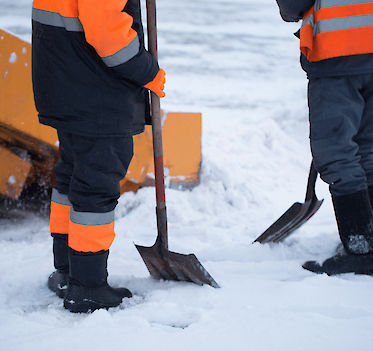Strategies and Safety Measures for Employers in Chilly Conditions
Safeguarding Workers: A Comprehensive Guide to Occupational Hazards in Severe Cold Weather
Severe cold weather conditions can pose serious threats to individuals, particularly those working outdoors or in poorly insulated facilities. Prioritizing the safety and well-being of employees in these conditions is essential. This blog will explore the health implications of extreme cold and offer actionable strategies for employers to ensure their staff's well-being in harsh conditions.
The Chilling Consequences: Health Risks of Frost and Cold
When the temperature drops, the potential for health complications rises. There are multiple threats that can arise from prolonged exposure to severe cold. From the immediate threat of frostbite to the more insidious danger of hypothermia, the hazards are numerous. The onset of wintery conditions can also worsen symptoms for those with pre-existing cardiovascular or respiratory conditions.
- The first harbingers of frostbite are often the numbness and paleness of the skin, followed by a stiffening sensation—silent signals of imminent tissue freezing and the resulting cellular distress.
- The creeping onset of hypothermia brings shivers that can escalate to exhaustion, confusion, and even cardiac complications as the body struggles to maintain its core warmth.
- For workers with pre-existing health concerns, the cold can act as an indirect aggravator, amplifying the impact of conditions such as asthma and heart disease, thus magnifying the health burden.
Fortifying Defenses: Protective Strategies for Employers
Equipping workers with the right protective gear is crucial. Employers must embrace the responsibility of safeguarding their workforce from the harsh conditions of winter. This requires carefully crafted strategies to shield and protect their employees. Employers should provide insulated and waterproof clothing that effectively protects against the harsh cold while remaining compatible with job-specific equipment. In addition to attire, educating workers on the proper usage and maintenance of protective wear enhances its effectiveness and fosters a safety-conscious culture.
-
The inventory of protective gear should include not only the expected overcoats and thermal underlayers but also specialized garments that can align with the workers' tasks and ensure a cohesive defense line against the cold.
-
Timely retreats to heated zones don't just offer respite; they are vital combat stations where body temperatures are restored, and morale finds a foothold to stand firmly against the cold.
-
The frontline against the elements is drawn at the doorsteps of the workplace. Well-constructed and insulated areas staunch the advance of cold from the outdoors, maintaining a bastion of relative warmth.
-
Equipped with the understanding of how the cold can affect them and the safety protocols in place, workers become their own first line of defense in challenging weather conditions.
A Culture of Safety: Fostering Open Communication
Creating an environment where workers feel empowered to communicate safety concerns and health issues is a core component of any successful workplace safety program. Awareness, preparation, and active measures to combat the cold's effects are instrumental in safeguarding the health of workers. By taking the steps outlined in this piece, employers can both meet their obligations and create a more positive, productive work environment, even in the harshest of conditions.
Discover how Healthcare Express occupational medicine can help build a tailored safety plan for your company. Get a free business safety assessment here to ensure your workforce's well-being.
